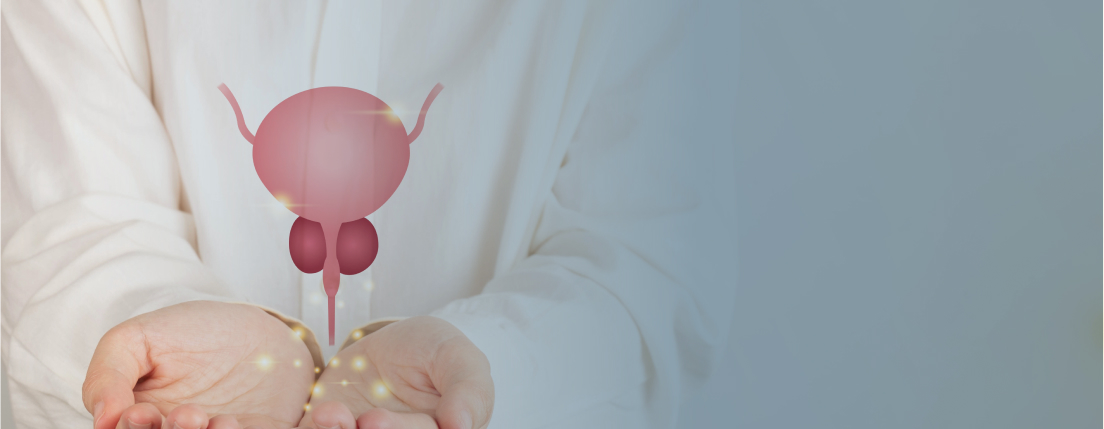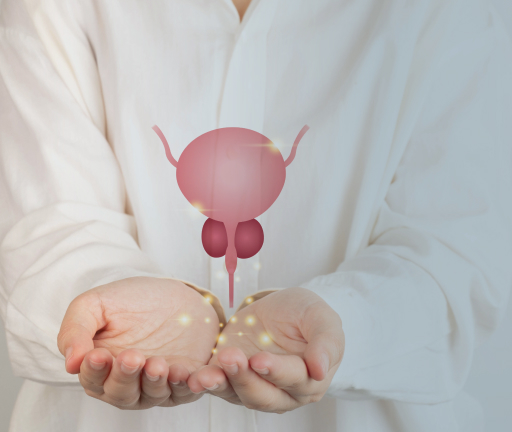It is needless to say that the department of Paediatric Surgery is the ‘Go-To’ speciality for even the urological problems in children, as the surgeons are well adept at handling "children", "congenital anomalies" and all the various permutations that these two can present in. The commonly treated Paediatric Urological problems include -
- Posterior Urethral Valve
- Exstrophy - Epispadias complex
- Vesico-ureteric Reflux (VUR), Hydroureteronephrosis (HUN)
- Pelvi - Ureteric Junction Obstruction (PUJO)
- Neurogenic bladder
- Renal Duplex system
- Hypospadias, Epispadias
- Undescended testes
- Circumcision
- Congenital Adrenal Hyperplasia (CAH)
- Vaginal atresia
- Disorders of Sexual Differentiation (DSD) [Ambiguous Genitalia].
FAQs
At Aster Hospitals we provide the highest quality of care and a transformative experience for all your healthcare needs. With our network of multi-speciality hospitals, specialised doctors, and world-class technology, we bring global standards of medical care to our patients.
Who is a pediatric urologist?
A pediatric urologist is a medical doctor who specializes in the diagnosis and treatment of urological problems in children. This includes conditions related to the urinary system (such as urinary tract infections, urinary incontinence, and kidney stones) as well as conditions related to the male reproductive system (such as undescended testicles and hypospadias). Pediatric urologists have additional training beyond that of a general urologist to specifically address the unique needs of children and adolescents. They work closely with pediatricians, specialized surgeons, and other healthcare professionals to provide comprehensive care to their patients.
What is vesicoureteral reflux?
Vesicoureteral reflux is a condition in which urine flows backward from the bladder into the ureters, the tubes that carry urine from the kidneys to the bladder. This condition can lead to kidney damage and recurrent UTIs. This happens because the junction of ureter and bladder,becomes weakened or incompetent and fails to prevent the backflow of urine. As a result, the bladder is unable to completely empty, which can lead to a buildup of bacteria in the bladder and kidneys, thus increasing the risk of infection.
What is an undescended testicle?
An undescended testicle is a condition in which one or both testicles fail to move down from the abdomen into the scrotum before birth. As a result, the risk of infertility and testicular cancer increases. Additionally, the testicle may be more prone to infection, leading to pain and swelling. Surgery may be needed to correct this condition to avoid future fertility and cancer risks.
What treatments are available for pediatric urological problems?
Treatment for pediatric urological problems depends on the specific condition but may include medication, surgery, or behavioral therapy, such as bladder training for bedwetting. In some cases, a combination of treatments may be necessary. For example, medications may be used to reduce bladder spasms and discomfort, while behavioral therapy can help the child develop better bladder control. Surgery may be an option for more serious conditions, such as kidney stones or structural abnormalities.
How can parents help prevent urological problems in children?
Parents can help prevent urological problems in children by ensuring that they stay hydrated. This is done by encouraging regular bathroom breaks and promoting appropriate hygiene habits, such as wiping front to back after using the toilet. This can help prevent bacteria build-up in the urogenital area, which can lead to infections and other issues.
What are the common symptoms of pediatric urology problems?
Pediatric urology problems can manifest in various ways, and the symptoms may differ depending on the specific condition. Here are some common symptoms that may indicate pediatric urology problems:
Urinary tract infections (UTIs): frequent urination, pain or burning during urination, foul-smelling urine, fever, and abdominal pain.
Bedwetting: involuntary urination during sleep in children who are old enough to control their bladders.
Incontinence: The inability to control urination, leading to urine leakage during the day or night.
Painful urination: discomfort or pain while passing urine.
Abnormal urine flow: a weak urine stream, dribbling after urination, or spraying of urine.
Blood in the urine: reddish or brownish urine that may indicate an infection, injury, or inflammation in the urinary tract.
Undescended testicles: One or both testicles do not descend into the scrotum, which may affect fertility later in life.
Hydronephrosis is the swelling of pelvis one or both kidneys due to urine build-up caused by an obstruction in the urinary tract.
Vesicoureteral reflux (VUR): a backward flow of urine from the bladder to the kidneys, which may lead to kidney damage or infections.
If your child experiences any of these symptoms, it is imperative to consult a pediatric urologist for proper diagnosis and treatment.
What is hypospadias?
Hypospadias is a condition in which the urethral opening is located on the underside of the penis instead of at the tip. It is associated with an abnormal bending of penis known as chordee.
Surgery is often needed to correct this condition. The surgery is necessary because the abnormal position of the urethra can cause a number of complications, including urinary tract infections and difficulty urinating. It can also affect sexual function and fertility.
What happens during a pediatric urology exam?
During a pediatric urology exam, the doctor will perform a physical exam and may also order diagnostic tests, such as urine tests or imaging studies. These tests are designed to evaluate the child's urological health. The physical exam helps the doctor determine if there are any abnormalities or health issues, while the diagnostic tests provide more detailed information about the child's urological health.
Are pediatric urological problems typically curable?
Many pediatric urological problems are treatable, and with early diagnosis and intervention, many children continue on to have normal urological function and development. However, some conditions may require ongoing management or monitoring. These conditions may be the result of birth defects, such as spina bifida, which can cause abnormal development of the bladder, urethra, or kidneys. Other conditions may arise from infections, trauma, or even genetic disorders. Early diagnosis and intervention are key to providing the most effective outcome for each child.
Pediatric urology problems can manifest in various ways, and the symptoms may differ depending on the specific condition. Here are some common symptoms that may indicate pediatric urology problems:
- Urinary tract infections (UTIs): frequent urination, pain or burning during urination, foul-smelling urine, fever, and abdominal pain.
- Bedwetting: involuntary urination during sleep in children who are old enough to control their bladders.
- Incontinence: The inability to control urination, leading to urine leakage during the day or night.
- Painful urination: discomfort or pain while passing urine.
- Abnormal urine flow: a weak urine stream, dribbling after urination, or spraying of urine.
- Blood in the urine: reddish or brownish urine that may indicate an infection, injury, or inflammation in the urinary tract.
- Undescended testicles: One or both testicles do not descend into the scrotum, which may affect fertility later in life.
- Hydronephrosis: swelling of one or both kidneys due to urine build-up caused by an obstruction in the urinary tract.
- Vesicoureteral reflux (VUR): The backward flow of urine from the bladder to the kidneys, which may lead to kidney damage or infections.
If your child experiences any of these symptoms, it is critical to consult a pediatric urologist for proper diagnosis and treatment.



